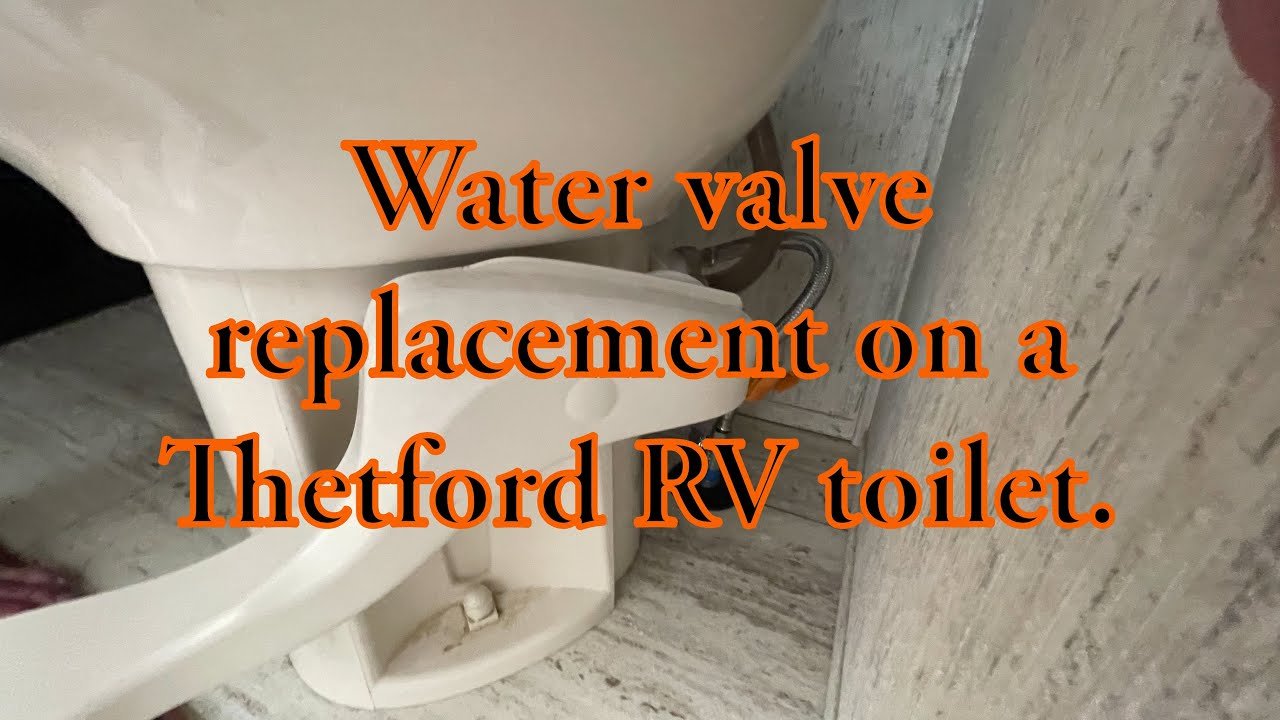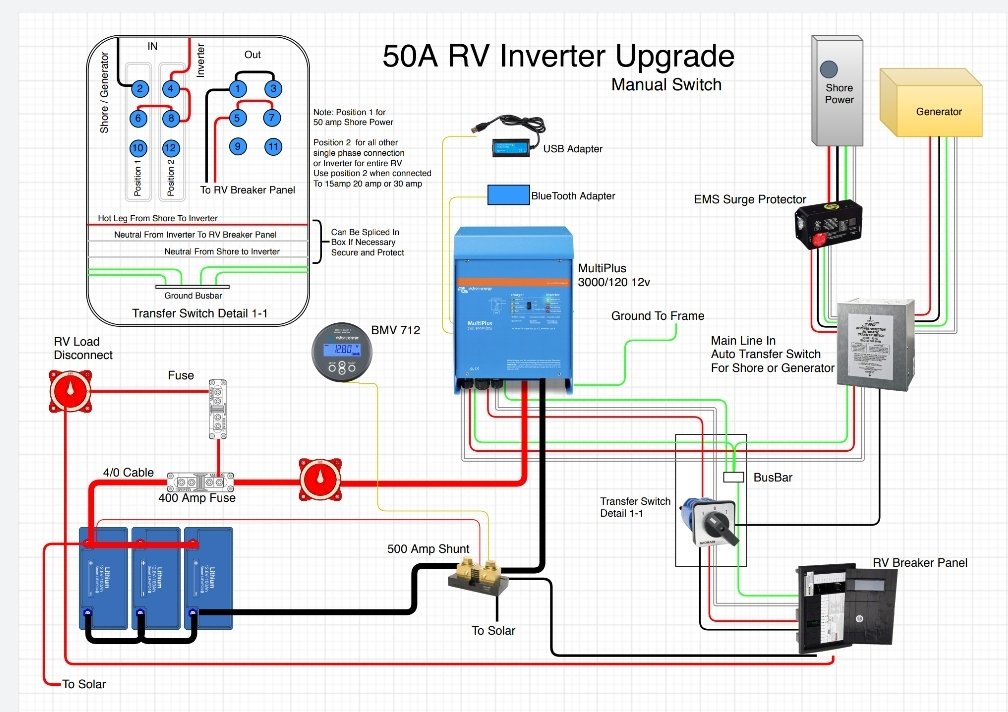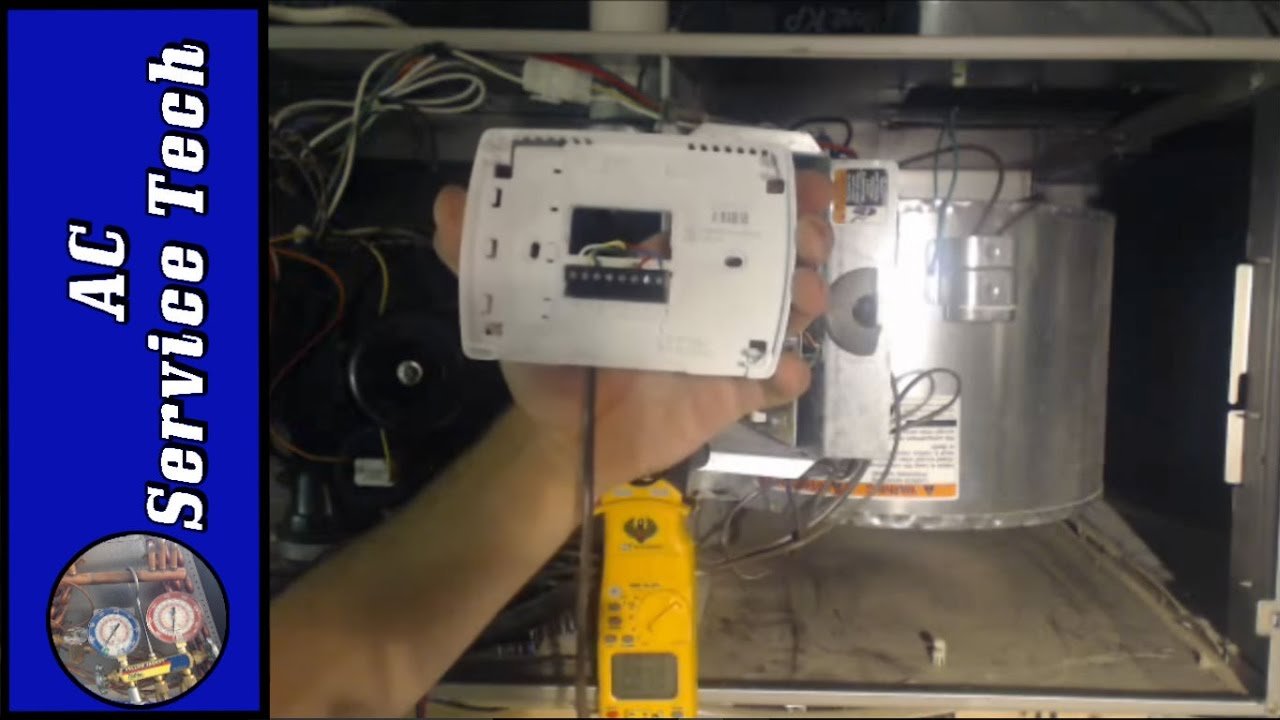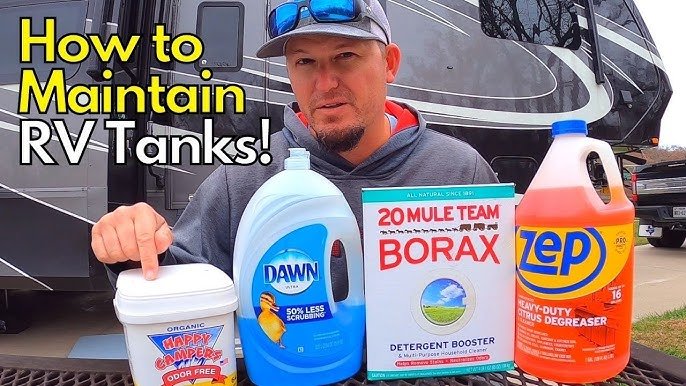Yes, you can put a mini split in an RV. Many RV owners are doing it.
Mini splits offer efficient heating and cooling for RVs. Traveling in an RV provides freedom and adventure. But keeping your RV comfortable can be challenging. Traditional air conditioners may not be efficient or quiet enough. A mini split system can be a great solution.
It offers both heating and cooling, making your RV comfortable year-round. Mini splits are also energy-efficient and quiet. They’re easy to install and maintain. This blog will explore the benefits and steps to installing a mini split in your RV. Keep reading to learn more about making your RV more comfortable with a mini split system.

Credit: senormisterioso.wordpress.com
Introduction To Mini Splits In Rvs
Mini splits can be installed in RVs for better temperature control. They are efficient and save space. This makes them perfect for small living areas.
Traveling in an RV offers freedom and adventure. Comfort is key during your journey. A reliable cooling and heating system makes a big difference. Have you considered a mini split for your RV? This blog post explores the benefits of mini splits in RVs.
What Is A Mini Split?
A mini split is a type of HVAC system. It has two main parts: an outdoor unit and an indoor unit. The outdoor unit connects to the indoor unit through a small conduit. This system does not need ductwork. It is also called a ductless system. Mini splits are popular in homes and businesses. They are now gaining popularity in RVs.
Benefits Of Mini Splits In Rvs
Mini splits offer many advantages for RV owners. They provide efficient cooling and heating. This is crucial for varying weather conditions. Mini splits are also energy-efficient. They consume less power than traditional RV air conditioners. This can save you money on energy costs. Another benefit is quiet operation. Mini splits run more quietly than many other systems. This means a peaceful environment inside your RV. Installation is also straightforward. There is no need for bulky ductwork. The system takes up less space. This is ideal for the limited space in an RV. Finally, mini splits offer customizable comfort. You can control the temperature in different zones. This means the bedroom can be cool while the living area stays warm. This level of comfort is hard to achieve with other systems. In summary, mini splits provide efficient, quiet, and customizable climate control for your RV. “`
Types Of Mini Splits
Installing a mini split in your RV can improve your comfort. But which type should you choose? There are two main types of mini splits: single-zone and multi-zone. Each type has its own benefits and uses. Understanding these types can help you make an informed decision for your RV.
Single-zone Mini Splits
Single-zone mini splits cool or heat one area. They are perfect for small spaces. This type is easy to install and maintain. It consists of one indoor unit and one outdoor unit. Single-zone systems are energy-efficient. They allow you to control the temperature in one room. This can save energy and reduce costs. If your RV is small, a single-zone mini split might be the best option.
Multi-zone Mini Splits
Multi-zone mini splits can heat or cool multiple areas. They are ideal for larger RVs. This type includes several indoor units connected to one outdoor unit. You can control each zone independently. This means each room can have a different temperature. Multi-zone systems are versatile and provide more comfort. They can be more complex to install. But they offer great flexibility in managing your RV’s climate.
Choosing The Right Mini Split
Choosing the right mini split for your RV ensures comfort and efficiency. It’s important to consider several factors. These include cooling capacity and energy efficiency ratings. Making the right choice can save money and improve your RV experience.
Cooling Capacity
The cooling capacity of a mini split is crucial for comfort. This is measured in BTUs (British Thermal Units). The right BTU rating depends on the size of your RV. A larger RV needs a higher BTU rating. A smaller RV needs a lower BTU rating.
- Small RVs: 6,000-9,000 BTUs
- Medium RVs: 10,000-12,000 BTUs
- Large RVs: 13,000-18,000 BTUs
Choosing the correct BTU rating ensures efficient cooling. It also prevents energy waste.
Energy Efficiency Ratings
Energy efficiency is key to saving money. Look at the SEER (Seasonal Energy Efficiency Ratio) rating. A higher SEER rating means better efficiency. It also means lower energy bills. Most mini splits have SEER ratings between 13 and 20.
| SEER Rating | Efficiency |
|---|---|
| 13-15 | Standard Efficiency |
| 16-20 | High Efficiency |
Choosing a high SEER rating mini split can save money in the long run.
Remember, a good mini split balances cooling capacity and energy efficiency. This ensures comfort and cost savings in your RV.

Credit: www.youtube.com
Installation Process
Installing a mini split in your RV can be a great way to stay cool during your travels. It’s important to follow the correct steps to ensure a successful installation. This section will cover the pre-installation considerations and provide a step-by-step installation guide.
Pre-installation Considerations
Before starting the installation, there are a few key factors to consider:
- Electrical Requirements: Ensure your RV’s electrical system can handle the mini split.
- Space: Determine where you will mount the indoor and outdoor units.
- Tools: Gather all necessary tools such as a drill, screwdriver, and level.
- Permits: Check if you need any permits for the installation.
Step-by-step Installation Guide
Follow these steps to install your mini split:
- Select the Location: Choose where to mount the indoor and outdoor units. Ensure there is enough space for air circulation.
- Install the Mounting Bracket: Secure the mounting bracket on the selected wall using screws and a level.
- Drill the Hole: Drill a hole for the refrigerant lines, electrical wiring, and drain pipe. The hole should be slightly larger than the bundle of lines.
- Mount the Indoor Unit: Attach the indoor unit to the mounting bracket. Ensure it is level and secure.
- Install the Outdoor Unit: Place the outdoor unit on a stable surface. Use mounting brackets if needed.
- Connect the Refrigerant Lines: Run the refrigerant lines, electrical wiring, and drain pipe through the drilled hole. Connect the lines to the outdoor unit.
- Vacuum the System: Use a vacuum pump to remove air from the refrigerant lines. This step is crucial for the system’s efficiency.
- Test the System: Turn on the mini split and check for proper operation. Adjust settings as needed.
Following these steps will help ensure a successful mini split installation in your RV. Enjoy the comfort of a well-regulated temperature during your travels!
Power Requirements
Installing a mini split in an RV involves considering its power requirements. It is crucial to understand the electrical needs and power consumption to ensure efficient operation. Proper planning will help avoid power issues during your travels. Let’s dive into the details.
Electrical Needs
A mini split system in an RV requires a stable power source. Typically, RVs are equipped with either a 30-amp or 50-amp electrical system. Ensure your mini split unit matches your RV’s electrical capacity.
Here is a quick table to help you understand the electrical needs:
| Electrical System | Power Capacity | Mini Split Compatibility |
|---|---|---|
| 30-amp | 3,600 watts | Suitable for small units |
| 50-amp | 12,000 watts | Suitable for larger units |
Check your RV’s electrical system before purchasing a mini split. This ensures compatibility and avoids overloading.
Power Consumption Tips
Efficient power use is crucial for RV living. Here are some tips to manage your mini split’s power consumption:
- Set the thermostat to a comfortable but energy-efficient temperature.
- Use the mini split’s timer function to control usage.
- Ensure your RV is well-insulated to reduce the load on the mini split.
- Turn off other high-power devices when the mini split is running.
Following these tips can help manage power consumption and ensure your mini split runs efficiently. This will enhance your RV experience, making your travels more comfortable.

Credit: senormisterioso.wordpress.com
Maintenance And Care
Maintaining a mini split system in your RV ensures it runs efficiently. Proper care can extend its lifespan and improve its performance. This section covers essential tips for routine maintenance and troubleshooting common issues.
Routine Maintenance
Regular upkeep of your mini split system is crucial. Here are some steps to follow:
- Clean the Filters: Dirty filters reduce efficiency. Clean or replace them every month.
- Check the Vents: Ensure nothing blocks the air vents. This helps the system run smoothly.
- Inspect the Coils: Clean the evaporator and condenser coils. Use a soft brush or cloth.
- Clear the Drain Line: Check the drain line for clogs. This prevents water damage.
Troubleshooting Common Issues
Sometimes, you may face minor issues with your mini split. Here are some common problems and their solutions:
| Issue | Possible Cause | Solution |
|---|---|---|
| System Not Cooling | Dirty Filter | Clean or replace the filter. |
| Leaking Water | Clogged Drain Line | Clear the drain line. |
| Unusual Noises | Loose Parts | Tighten or replace any loose parts. |
| System Not Turning On | Power Issue | Check the power supply and connections. |
Keep these tips in mind to maintain your mini split system. A well-maintained system ensures comfort during your RV travels.
Cost Analysis
Installing a mini split in your RV can be a smart choice. But before making a decision, it’s important to consider the cost. This section will provide a detailed cost analysis, focusing on both the initial investment and long-term savings.
Initial Investment
The initial cost of a mini split system can be significant. Prices typically range from $1,000 to $2,500. This includes the unit and installation fees. It’s important to hire a professional for installation. This ensures the system works properly and efficiently.
Additional costs can include electrical upgrades. Some RVs may need improved wiring to handle the new system. These upgrades can add $500 to $1,000 to your budget.
Long-term Savings
While the upfront cost may seem high, long-term savings are substantial. Mini splits are energy-efficient. They use less electricity than traditional RV air conditioners. This leads to lower utility bills.
Mini splits also have a longer lifespan. Traditional RV air conditioners last about 5 to 10 years. Mini splits can last up to 20 years with proper maintenance. This reduces replacement costs over time.
Another benefit is the dual functionality. Mini splits can provide both heating and cooling. This eliminates the need for separate heating systems. It can save space and reduce overall maintenance costs.
Expert Tips And Recommendations
Installing a mini split in your RV can greatly enhance comfort. Here are expert tips to make the right choices and maximize efficiency.
Choosing The Right Brand
Not all mini splits are created equal. Selecting the right brand is crucial.
- Durability: Ensure the brand has a reputation for long-lasting products.
- Energy Efficiency: Look for units with a high SEER rating. The higher the SEER, the more efficient the unit.
- Customer Support: A brand with good customer service can save you headaches.
Some trusted brands include:
| Brand | Key Feature |
|---|---|
| Mitsubishi | High SEER ratings |
| Daikin | Excellent durability |
| LG | Great customer support |
Maximizing Efficiency
Once you choose the right brand, focus on maximizing efficiency.
- Proper Installation: Have a professional install your mini split to ensure it’s done correctly.
- Regular Maintenance: Clean filters and check for leaks regularly.
- Smart Thermostats: Use programmable thermostats to optimize temperature control.
- Insulation: Ensure your RV is well-insulated to prevent heat loss.
Following these steps can help you get the most out of your mini split.
User Experiences
Many RV owners consider installing a mini split to improve comfort. User experiences vary, with both success stories and common challenges.
Success Stories
Numerous RV owners have shared their positive experiences. They praise mini splits for their efficiency and quiet operation.
One user, John, installed a mini split in his RV. He reported a significant drop in temperature during hot summers. He also noted lower energy consumption compared to traditional AC units.
Another user, Lisa, loves the ease of use. She finds the remote control feature extremely convenient. It helps her adjust the temperature without leaving her seat.
Common Challenges
While many enjoy their mini splits, some face challenges. Installation can be tricky, especially in smaller RVs.
One common issue is finding the right spot for the unit. Mini splits need adequate space for installation and ventilation.
Some users also mention the initial cost. Mini splits can be expensive compared to other cooling options. However, many believe the long-term savings justify the investment.
Lastly, maintenance can be a concern. Regular cleaning is necessary to keep the unit running efficiently. Some RV owners find this task a bit cumbersome.
Despite these challenges, many users believe the benefits of mini splits outweigh the downsides.
Frequently Asked Questions
Can You Install A Mini Split In An Rv?
Yes, you can install a mini split in an RV. It provides efficient heating and cooling. Ensure proper installation for optimal performance.
What Are The Benefits Of A Mini Split In An Rv?
A mini split offers efficient climate control, quiet operation, and energy savings. It improves comfort in your RV.
How Do You Power A Mini Split In An Rv?
Power a mini split using your RV’s electrical system. Ensure adequate power supply and proper wiring for safe operation.
Is A Mini Split Suitable For All Rv Types?
Yes, mini splits are versatile and can be installed in most RV types. Check compatibility with your specific RV model.
Conclusion
Putting a mini split in an RV makes sense. It’s practical and efficient. You get better temperature control. It’s compact and quiet. Installation is straightforward for most. Energy savings are significant. Many RV owners find it worthwhile. Your comfort improves on the road.
This upgrade enhances your RV lifestyle. Enjoy your travels with a comfortable climate.






